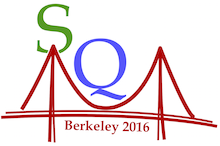Speaker
Naghmeh Mohammadi
(Nikhef National institute for subatomic physics (NL))
Description
The latest ALICE results on the centrality and transverse momentum dependence of $v_{2}$, $v_{3}$, $v_{4}$ and $v_{5}$ for $\pi^{\pm}$, $\mathrm{K}^{\pm}$ and p+$\overline{\mathrm{p}}$ in Pb-Pb collisions at $\sqrt{s_\mathrm{{NN}}} = 2.76$ TeV are presented. The values of these flow coefficients exhibit a clear mass ordering for $p_{\mathrm{T}} < 3$ $\mathrm{GeV}/c$ for all harmonics. For transverse momentum values larger than about 3 $\mathrm{GeV}/c$, mesons exhibit distinctive flow values compared to baryons, suggesting that coalescence might be the relevant particle production mechanism in this region. The experimental data for $p_{\mathrm{T}}< 3$ $\mathrm{GeV}/c$ are described fairly well by the hydrodynamical model iEBE-VISHNU, which models the hydrodynamical expansion of the fireball using a value of $\eta/s = 0.08$, coupled to a hadronic cascade model (UrQMD). Finally, we find that predictions from A Multi-Phase Transition Model (AMPT) indicate the late hadronic rescattering stage contributes significantly to the mass splitting of azimuthal flow (n=2-4). These predictions are compared to our data.
| On behalf of collaboration: | ALICE |
|---|
Author
Naghmeh Mohammadi
(Nikhef National institute for subatomic physics (NL))
